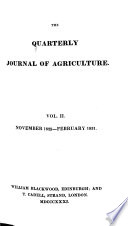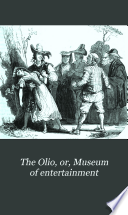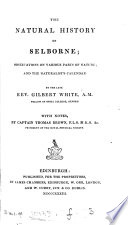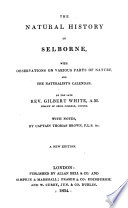 ... worms seem to be the great promoters of vegetation, which would proceed but lamely without them, by boring, perforating, and loosening the soil, and rendering it pervious to rains and the fibres of plants, by drawing straws and stalks of leaves and... ... worms seem to be the great promoters of vegetation, which would proceed but lamely without them, by boring, perforating, and loosening the soil, and rendering it pervious to rains and the fibres of plants, by drawing straws and stalks of leaves and...  Amphibious animals - Page 526by William Bingley - 1805Full view Amphibious animals - Page 526by William Bingley - 1805Full view - About this book
 | William Bingley - 1829 - 380 pages
...fibres of plants, by drawing straws and stalks of leaves and twigs into it ; and chiefly, by throwing up infinite numbers of lumps called worm-casts, which form a fine manure for grass and corn. Gardeners and farmers express their detestation of worms : the former, because they... | |
 | William Blackwood - 1831 - 986 pages
...soil, and rendering it pervious to rains and the fibres of plants, by drawing straws and stalks of leaves and twigs into it ; and, most of all, by throwing up such infinite numbers of lumps of earth, called worm-casts, which being their excrement, is a fine manure for grain and grass. Worms... | |
 | Stephen Glover - 1831 - 510 pages
...the soil, and rendering it pervious to rains, and the fibres of plants, by drawing straws, stalks of leaves and twigs into it ; and, most of all, by throwing up such an infinite number of lumps of earth, called worm casts, which, being their excrement, is a fine manure... | |
 | Gilbert White - 1832 - 354 pages
...soil, and rendering it pervious to rains and the fibres of plants, by drawing straws and stalks of leaves and twigs into it ; and, most of all, by throwing up such infinite numbers of lumps of earth, called worm-casts, which, being their excrement, is a fine manure for grain and grass. Worms... | |
 | 1832 - 498 pages
...and rendering it pervious to rains and the fibres of plants, by drawing straws and stalks ofleaves and twigs into it ; and most of all, by throwing up such infinite numbers of lumps of earth called worm-casts, which, being their excrement, is a fine manure for grain and grass." He... | |
 | 1832 - 524 pages
...and rendering it pervious to rains and the fibres of plants, by drawing straws and stalks of leaves into it ; and, most of all, by throwing up such infinite numbers of lumps of earth called worm-casts, which being their excrement, is a fine mar nure for grain and grass." Farmers... | |
 | 1909 - 744 pages
...soil, and rendering it pervious to rains and the fibres of plants, "by drawing straws and stalks of leaves and twigs into it; and, most of " all, by throwing up such infinite numbers of lumps of earth called " worm-casts, which, being their exerement, is a fine manure for grain "and grass...... | |
 | Gilbert White - 1833 - 338 pages
...soil, and rendering it pervious to rains and the fibres of plants, by drawing straws and stalks of leaves and twigs into it; and, most of all, by throwing up such infinite numbers of lumps of earth called wormcasts, which, being their excrement, is a fine manure for grain and grass. Worms... | |
 | Gilbert White - 1833 - 410 pages
...and rendering it pervious to rains and the fibres of plants, by drawing straws and stalks of leaves into it ; and, most of all, by throwing up such infinite numbers of lumps of earth, called worm-casts, * The earth-worm has been long considered a viviparous animal, but M.... | |
 | Gilbert White - 1834 - 392 pages
...and rendering it pervious to rains and the fibres of plants, by drawing straws and stalks of leaves into it; and, most of all, by throwing up such infinite numbers of lumps of earth, called worm-casts, * The earth-worm has been long considered a viviparous animal, but M.... | |
| |